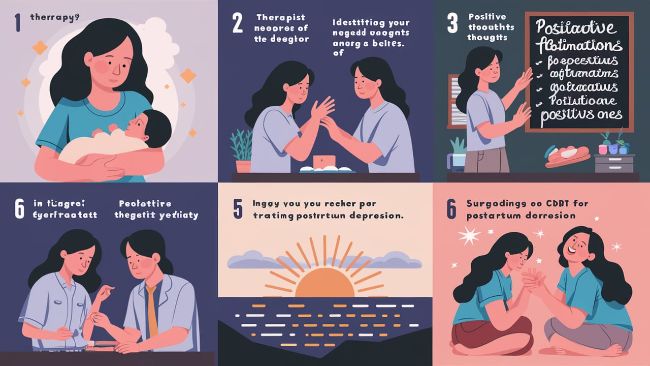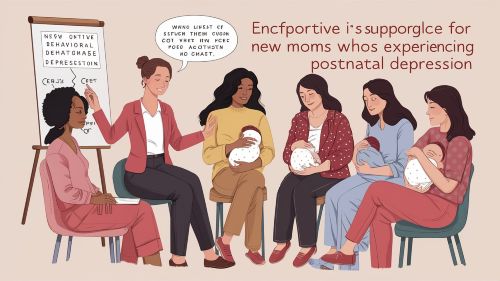You’re handed a clipboard in the sterile light of a doctor’s office, or you find a link during a 3 a.m. doom-scrolling session. It’s a simple form with just 10 questions, titled the Edinburgh Postnatal Depression Scale (EPDS).
To a new mom struggling in silence, this short questionnaire can feel like a final exam on her motherhood—a test she’s sure she’s failing. But what if it’s not a test at all? What if it’s a key?
The EPDS is one of the most powerful and widely used tools in postpartum care, but it’s often misunderstood. To truly harness its power, you need to understand how it works. It’s not a magical diagnostic machine, but a brilliantly designed instrument for translating the messy, confusing, and often silent experience of a perinatal mood disorder into a clear language that you and your healthcare providers can understand.
This guide will take you on a tour inside the EPDS. We’ll break down what each question is really asking, how the scoring works, and how you can use this simple tool to open the door to getting the help you deserve.
The Big Picture: What is the EPDS Designed to Do?
Before we zoom in, let’s understand the purpose. The EPDS was created by a group of health professionals in Edinburgh, Scotland, in 1987. They needed a simple, reliable way to identify women who might be suffering from postpartum depression but weren’t speaking up.
Its primary job is screening, not diagnosing. This is a critical distinction.
- Screening: Casting a wide net to see who might have a condition. The EPDS is like the initial eye chart test at the DMV. It can tell you if you’re having trouble seeing, but it can’t tell you if you have astigmatism or nearsightedness.
- Diagnosing: A comprehensive evaluation by a trained professional to determine the specific nature of a condition. This is like the full exam with an optometrist.
The EPDS is a translator. Its genius is that it takes your subjective, internal feelings (like guilt or anxiety) and turns them into objective, quantifiable data (a score). This data provides a clear, undeniable starting point for a conversation about your well-being.
A Guided Tour: What the 10 Questions Are Really Asking
The EPDS is more than a random list of questions. Each one is carefully crafted to probe a specific symptom cluster of depression and anxiety. Let’s break them down by theme.
[Insert an image here representing clarity or a magnifying glass.]
Questions 1 & 2: Probing for Anhedonia
- 1. I have been able to laugh and see the funny side of things.
- 2. I have looked forward with enjoyment to things.
These two questions are a direct measure of anhedonia, a core symptom of depression. Anhedonia is the inability to feel pleasure in normally pleasurable activities.
It’s not just about feeling sad; it’s about the absence of joy. It’s the feeling that the world has turned from vibrant color to shades of gray. You might intellectually know something is funny or that you should be excited about a visit from a friend, but you feel a profound numbness instead. These questions are incredibly effective at capturing this emotional flattening.

Question 3: Measuring Guilt and Self-Blame
- 3. I have blamed myself unnecessarily when things went wrong.
PPD comes with a heavy, often irrational cloak of guilt. You might blame yourself for the baby crying, for having a difficult birth, for not breastfeeding “correctly,” or for simply not feeling the way you think you “should.” This question hones in on that tendency to internalize blame, a cognitive hallmark of depression.
Questions 4 & 5: Screening for Anxiety and Panic
- 4. I have been anxious or worried for no good reason.
- 5. I have felt scared or panicky for no very good reason.
This is why the EPDS is so brilliant—it’s not just about depression. These questions directly screen for postpartum anxiety and panic, which are just as common. A new mom has plenty of “good reasons” to worry. These questions specifically ask about the anxiety that feels free-floating and untethered to a specific, rational threat—the constant sense of dread or the sudden, overwhelming surges of panic that seem to come from nowhere.
Question 6: Assessing Your Sense of Overwhelm
- 6. Things have been getting on top of me.
This question speaks directly to the feeling of being completely overwhelmed and unable to cope. It captures the mental load of motherhood when compounded by a mood disorder. It’s the feeling that even the smallest tasks—making a simple meal, responding to an email—feel like climbing Mount Everest.
Questions 7, 8, & 9: Gauging Depressive Mood
- 7. I have been so unhappy that I have had difficulty sleeping.
- 8. I have felt sad or miserable.
- 9. I have been so unhappy that I have been crying.
This trio forms the core of the “depression” screening. They directly ask about low mood, sadness, and crying spells. Question 7 is particularly insightful, as it links unhappiness to a physical symptom—sleep disruption. It helps differentiate between being woken up by the baby (normal) and being kept awake by your own misery (a sign of depression).
A Critical Stop: Understanding Question 10
10. The thought of harming myself has occurred to me.
This question is the most important one on the scale and must be treated with the utmost seriousness. It is a direct screen for suicidal ideation.
If your answer to this question is anything other than “Never” (a score of 0), this is a medical emergency.
It does not matter what your total score is. Any positive answer on this question requires immediate action. These thoughts are a severe symptom of a treatable illness. You are not a bad person for having them, but you are also not safe.
Please take one of these actions RIGHT NOW:
- Call or text the 988 Suicide & Crisis Lifeline. It’s free, confidential, and available 24/7.
- Go to the nearest hospital emergency room.
- Call 911.
- Tell a trusted person that you are having these thoughts and need them to help you get to safety immediately.
Your recovery starts with staying alive. Please reach out now.
[This section MUST be visually distinct. Use a “Cover” block with a red or bright yellow background, large font, and bold text.]
How The Scoring System Works
The “how” of the EPDS comes down to its simple scoring system.
- Each of the 10 questions has four possible answers.
- These answers are assigned a point value from 0 to 3.
- Notice that for some questions (like 1, 2, and 4), the “healthiest” answer is at the top and scores a 0. For others (like 3, 5, and 6-10), the “healthiest” answer is at the bottom and scores a 0. This is intentional to prevent a person from just checking the same box all the way down.
- You add up the points for your 10 answers to get a total score out of a possible 30.
Interpreting Your Score: What the Numbers Mean

This score provides a snapshot of your symptom severity over the past week.
- Score of 0-9: Generally indicates a low probability of a significant mood disorder. However, if you are in this range but still feel that something is wrong, trust your feelings over the score. The EPDS is a net; sometimes things slip through.
- Score of 10-12: This is the “area of concern.” It doesn’t confirm a diagnosis, but it strongly suggests that you are experiencing symptoms that warrant a conversation with a healthcare provider. Think of this as a yellow flag.
- Score of 13 or higher: This indicates a high probability of a clinical postpartum depression or anxiety disorder. A score in this range is a clear signal that you should seek a professional evaluation as soon as possible. This is a red flag.
Again, remember the crucial caveat: The score is data, not a diagnosis. It’s not a grade. A higher score doesn’t make you a “worse” mother; it simply means your illness is causing more significant symptoms and you need more support.
The Final Step: How to Use Your Score
A score sitting on a piece of paper is useless. Its power is only unlocked when you share it.
- Acknowledge Your Reality: First, just sit with it. See the number as validation. “Okay, this isn’t just in my head. This is real.”
- Schedule an Appointment: Call your OB-GYN, midwife, or primary care doctor.
- Bring the Score with You: Walking into an appointment and saying “My EPDS score was a 17” is a powerful, direct, and undeniable way to start the conversation. It cuts through the tendency to say “I’m fine” and gets straight to the point.
- Use It as a Script: If you’re nervous, use the questionnaire itself to talk to your doctor or partner. You can say, “On question 4, about being anxious for no good reason, I answered ‘Yes, very often.’ That’s what my days feel like.”
Frequently Asked Questions (FAQ)
Q1: Why does the EPDS ask about the last 7 days?
This timeframe is long enough to capture a persistent mood state rather than just a single bad day, but short enough to be a relevant snapshot of your current experience.
Q2: Can my partner or family member fill it out for me?
No. The EPDS is a self-report tool. It’s designed to capture your internal experience. However, a concerned partner can certainly encourage you to take it and can use the questions as a guide to talk to you about what they’ve been observing.
Q3: Is the EPDS accurate?
Yes. The EPDS has been validated in countless studies across many cultures and languages. It is considered a highly reliable and effective screening tool for identifying perinatal mood and anxiety disorders.
From a Questionnaire to a Question of Hope
The Edinburgh Postnatal Depression Scale is more than a checklist. It’s a carefully calibrated instrument designed to hear you when you don’t have the words. It works by systematically probing the key domains of your emotional world—joy, guilt, anxiety, and sadness—and translating your answers into a single, powerful data point.
This data point is not your identity. It is your starting point. It’s the evidence you need to seek help and the language you can use to ask for it. It turns the vague, overwhelming question of “What’s wrong with me?” into the clear, hopeful question of “How do I start getting better?”
Disclaimer: This article provides information about a clinical screening tool and is not a substitute for professional medical advice. If you have thoughts of harming yourself, please seek immediate emergency help.
